Exploring the natural beauty of America isn’t just about sweeping landscapes and cityscapes; it also means delving into the incredible wildlife that calls this vast country home. From the arctic tundras of Alaska to the tropical regions of Florida, the United States is teeming with unique species found nowhere else in the world. Let’s embark on a journey to discover 12 of these breathtakingly beautiful creatures that truly make America remarkable.
1. The California Condor: A Remarkable Conservation Success Story
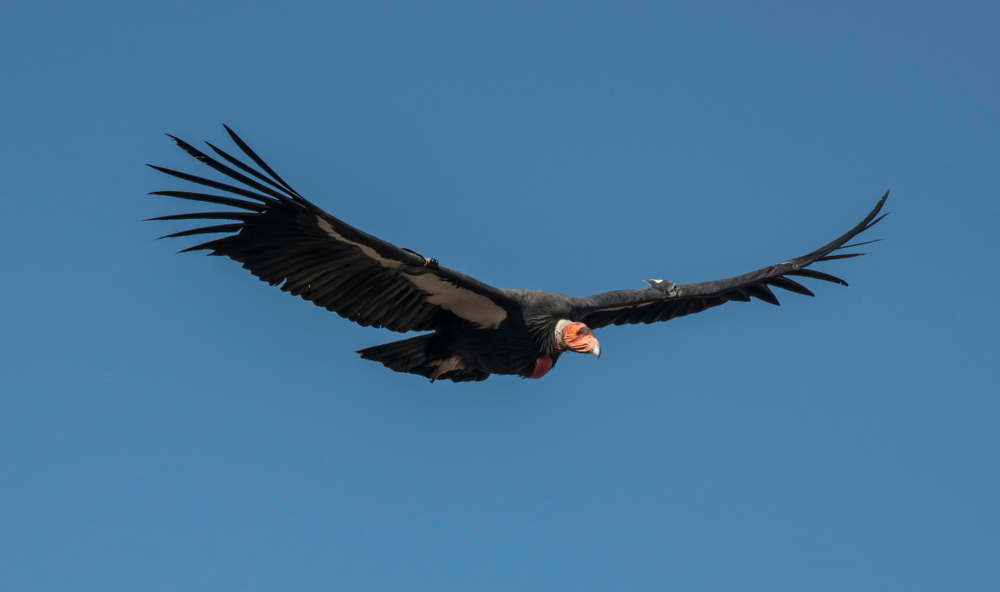
The California condor is not just a bird; it’s a symbol of hope and perseverance. With a wingspan that can reach up to 9.5 feet, this majestic creature is the largest land bird in North America. Found primarily in the rugged canyons and forests of California, these scavengers play a crucial role in the ecosystem by feeding on carrion, which helps clean the environment. Watching them glide effortlessly on thermal currents is a sight to behold, and their bald heads and striking black feathers make them an iconic presence in their natural habitat.
Like the bald eagle, the California condor faced a dire situation in the 20th century, with only 27 individuals left in the wild by 1987. Extensive conservation efforts, including a controversial but necessary captive breeding program, have helped increase their numbers. Now, according to the U.S. Fish and Wildlife Service, there are over 500 condors, with more than 300 flying free. This comeback story is a testament to the power of collaborative conservation efforts and highlights the importance of protecting endangered species.
2. The Majestic Bald Eagle: America’s National Symbol
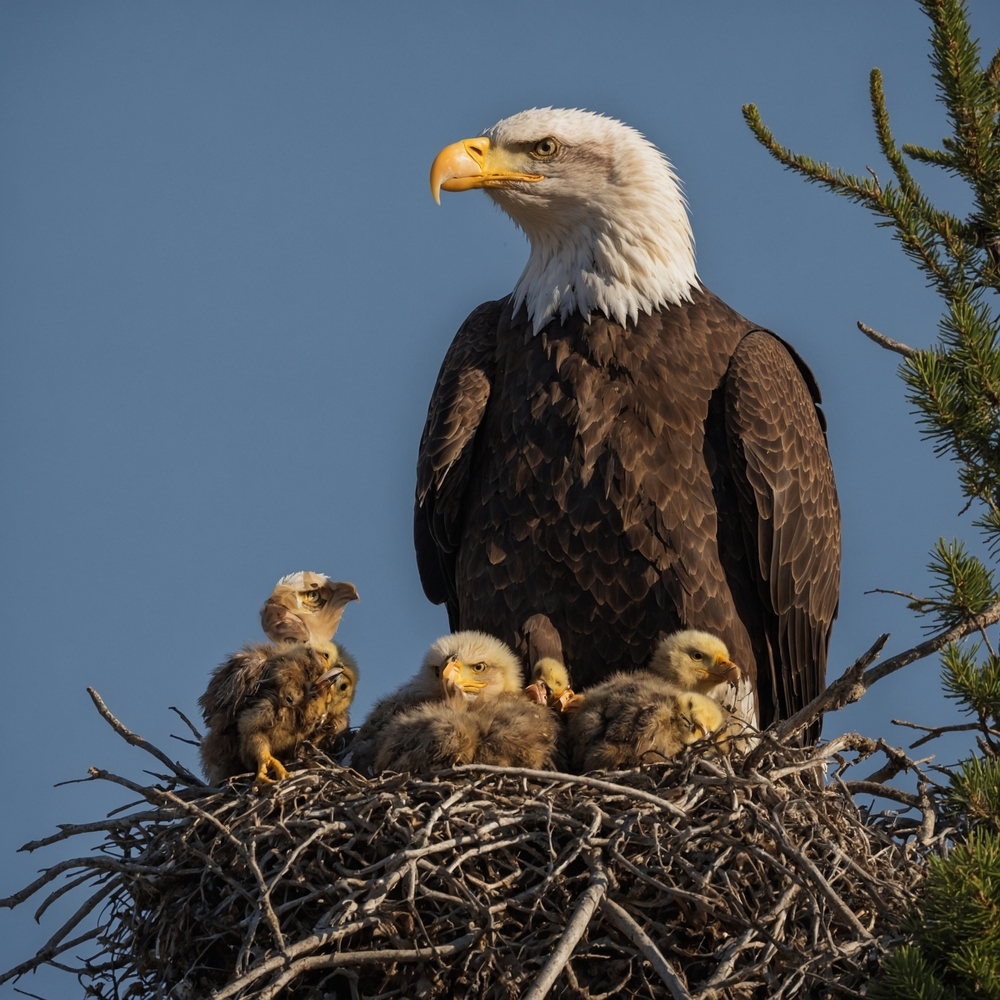
When you think of America’s wildlife, the bald eagle inevitably comes to mind. This emblematic bird, with its striking white head and piercing eyes, embodies strength and freedom. Living primarily in Alaska and the Pacific Northwest, bald eagles thrive near large bodies of water where their favorite meals, fish, are abundant. They are known for their massive nests, which they typically build high in trees or on cliffs, making them a breathtaking sight to behold. Watching a bald eagle soar gracefully across the sky is an unforgettable experience and a true testament to America’s diverse wildlife.
Interestingly, according to the National Audubon Society, bald eagles were once on the brink of extinction due to habitat loss and the use of DDT, a harmful pesticide. Thankfully, conservation efforts and strict legal protections have helped their populations rebound significantly. Today, they are a shining example of successful wildlife conservation in the U.S. Nature lovers and bird watchers alike celebrate the bald eagle as a symbol of resilience and a reminder of our responsibility to protect our planet’s fauna.
3. The Playful Florida Manatee: Gentle Giants of the Waterways
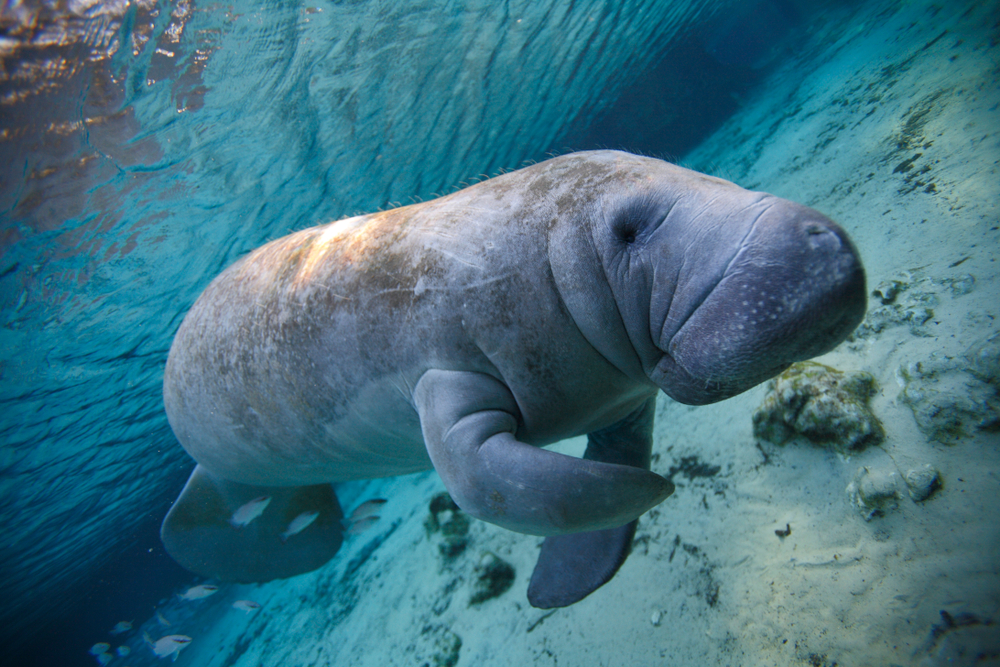
Few creatures are as endearing as the Florida manatee, often affectionately referred to as “sea cows.” These gentle giants, weighing up to 1,200 pounds, are found in the warm coastal waters and rivers of Florida. Manatees are herbivorous and can spend up to eight hours a day grazing on seagrasses, which is vital for maintaining healthy aquatic ecosystems. Their slow-moving nature and curious behavior make them a favorite among wildlife enthusiasts, who often spot them gliding gracefully through shallow waters.
Sadly, manatees face numerous threats, including boat collisions, habitat loss, and cold stress during chilly weather. Conservation groups, like the Save the Manatee Club, work tirelessly to protect these beloved creatures by raising awareness and advocating for safer waterways. Thanks to these efforts, the Florida manatee population has been steadily increasing over the past few decades. They’re a reminder of the importance of preserving natural habitats and the joy that comes from coexisting with wildlife.
4. The Elusive Mountain Lion: Masters of Stealth
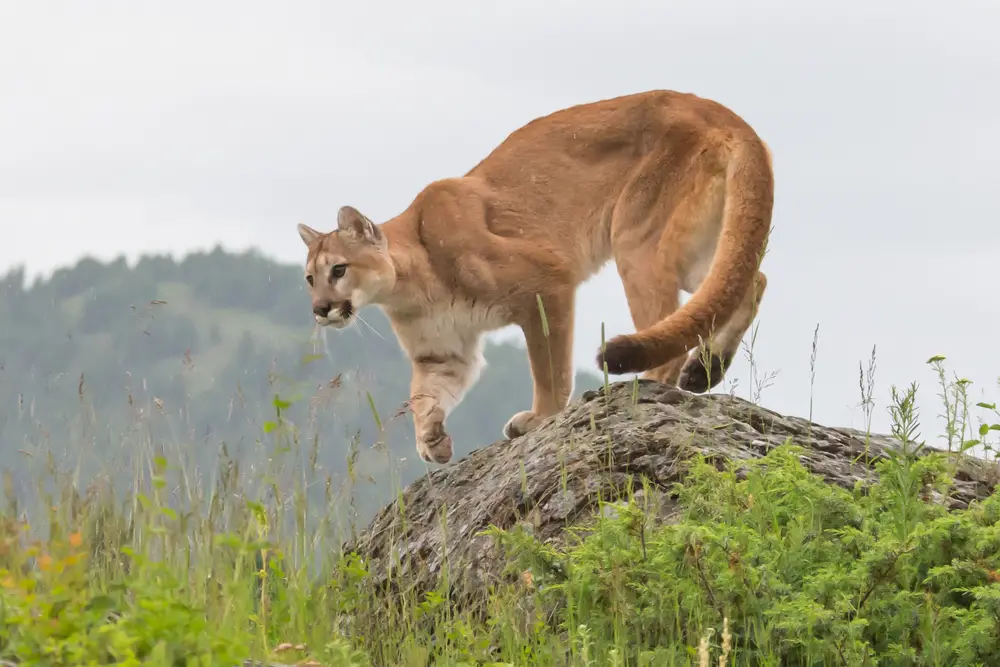
Mountain lions, also known as cougars or pumas, are the stealthy apex predators of North America. These solitary cats roam vast territories across the western United States, their majestic presence felt but rarely seen by human eyes. They are incredibly adaptable, living in a range of environments from arid deserts to dense forests. With their muscular bodies and powerful legs, mountain lions are skilled hunters, capable of taking down prey several times their size.
Despite their prowess, mountain lions face significant challenges, including habitat fragmentation and human-wildlife conflicts. As urban areas expand, these majestic creatures find themselves increasingly encroached upon, leading to a delicate balance between coexistence and conservation. Education and awareness programs aim to teach communities how to safely share the land with these predators. Mountain lions remind us of the wild heart of America and the intricate ecosystems that pulse just beyond our backyards.
5. The Enchanting American Bison: Icons of the Plains
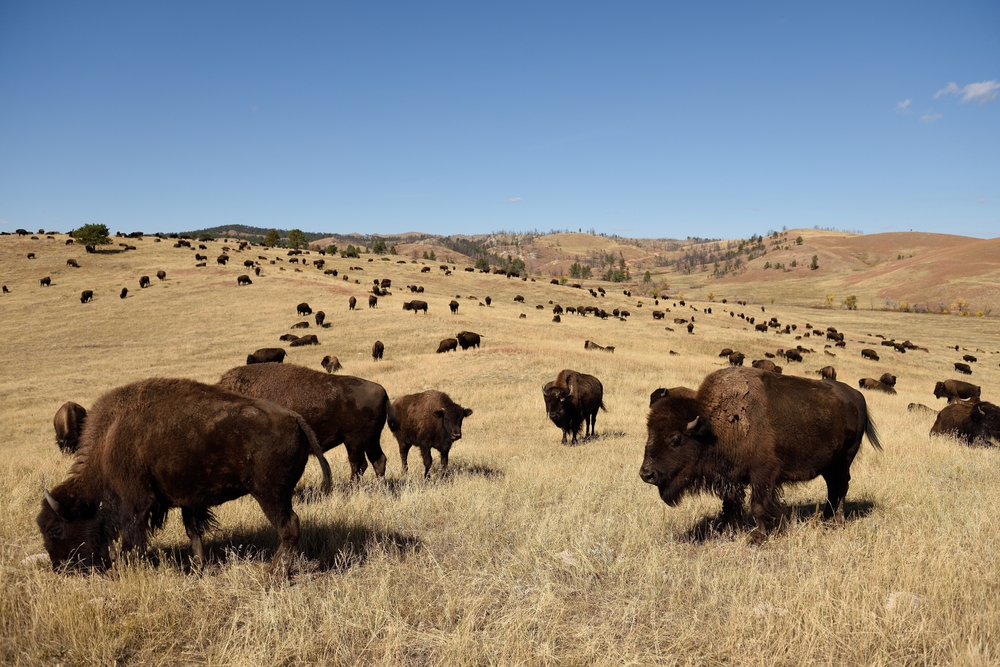
The American bison, with its massive, shaggy frame and iconic humpbacked silhouette, is a symbol of the Great Plains’ vastness and history. Once numbering in the millions, these magnificent creatures were nearly driven to extinction in the 19th century due to overhunting and habitat loss. Today, they roam freely in protected areas such as Yellowstone National Park, where visitors can witness their majestic presence against a backdrop of stunning landscapes. Watching a herd of bison move across the plains is akin to stepping back in time to an era when these animals ruled the American West.
Bison play a crucial role in their ecosystem by grazing on grasses, which promotes plant diversity and provides habitat for other species. Their conservation story is a testament to the power of dedicated efforts to protect and restore native wildlife. Bison are not only an emblem of America’s natural heritage but also a reminder of the interconnectedness of all living things. Their resurgence is a hopeful chapter in the ongoing story of wildlife preservation.
6. The Vibrant Scarlet Tanager: A Flash of Red in the Forest
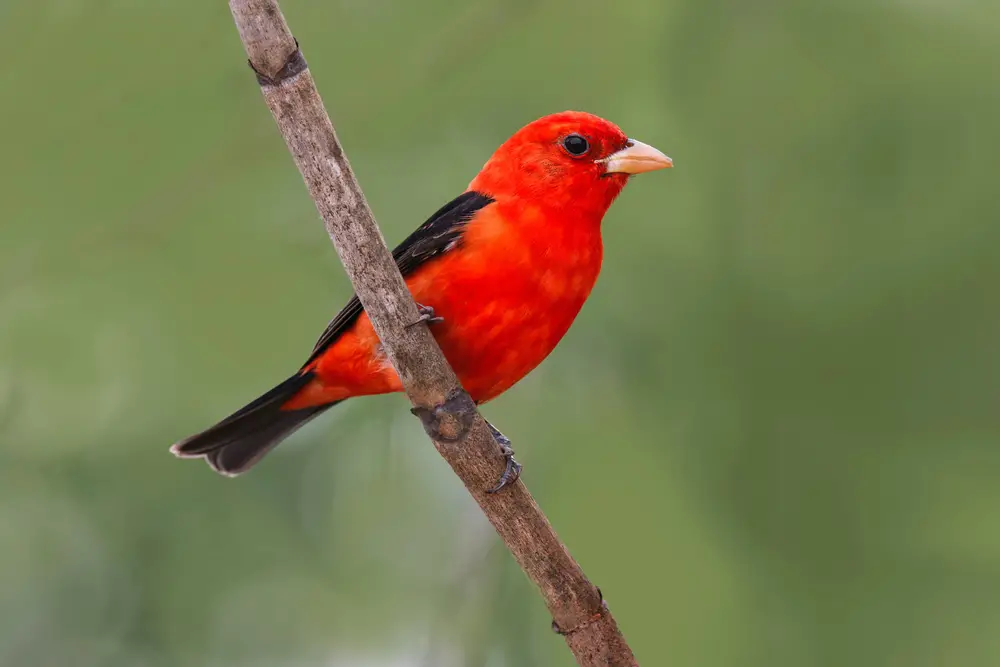
Among the lush green canopies of eastern North American forests, the scarlet tanager stands out with its brilliant red plumage and contrasting black wings. These songbirds spend their summers breeding in deciduous and mixed woodlands before migrating to South America for the winter. Their vibrant coloration is a stunning sight, especially during mating season when males put on elaborate displays to attract mates. The scarlet tanager’s song, a series of cheerful whistles and chirps, adds a melodious layer to the forest’s natural soundtrack.
Unfortunately, habitat loss and fragmentation pose significant threats to these migratory birds. Conservationists emphasize the importance of protecting both their breeding and wintering grounds to ensure their survival. Creating bird-friendly landscapes and supporting conservation initiatives are vital steps toward preserving their populations. Scarlet tanagers remind us of the beauty and complexity of avian life and the need to safeguard the diverse habitats that support them.
7. The Adorable American Black Bear: Forest Dwellers at Heart
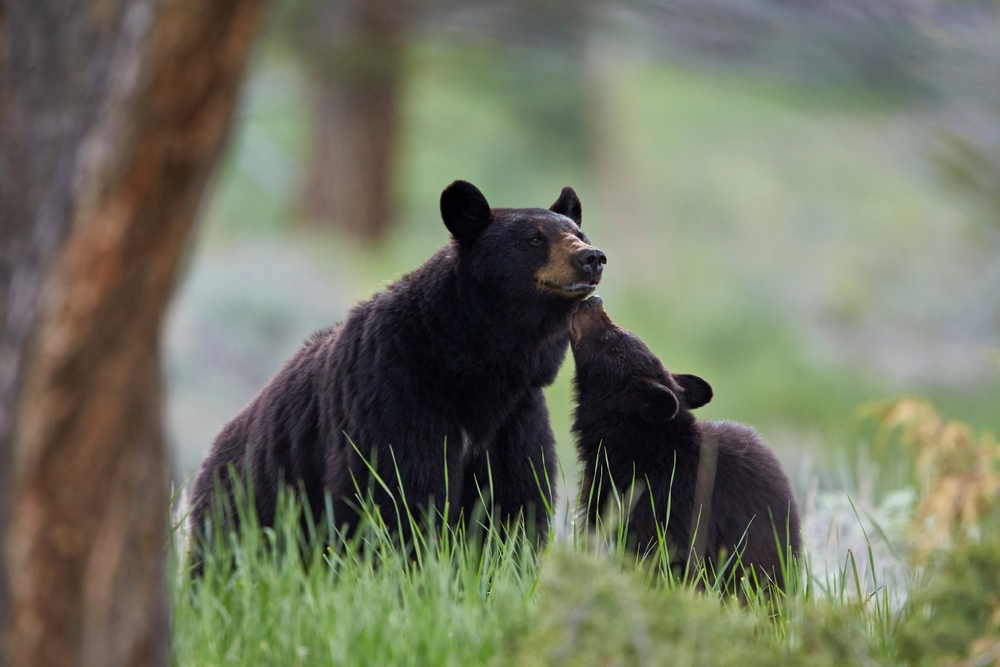
American black bears are the most widely distributed bear species in North America, known for their adaptability and curious nature. They inhabit a variety of environments, from the dense forests of the Pacific Northwest to the swamps of the southeastern United States. These bears have a diverse diet, foraging for fruits, nuts, insects, and occasionally small mammals, making them integral to their ecosystems as seed dispersers. Observing a black bear in its natural habitat is a reminder of the wilderness’s untamed beauty and the interconnectedness of nature.
While black bears are generally shy and avoid human contact, they can become habituated to human food, leading to potential conflicts. Wildlife management practices focus on educating the public about cohabitating safely with bears and minimizing attractants like unsecured garbage. Conservation efforts ensure that black bear populations remain healthy and sustainable. These magnificent animals symbolize the mystery and allure of the American wilderness.
8. The Delightful Prairie Dog: Social Architects of the Grasslands
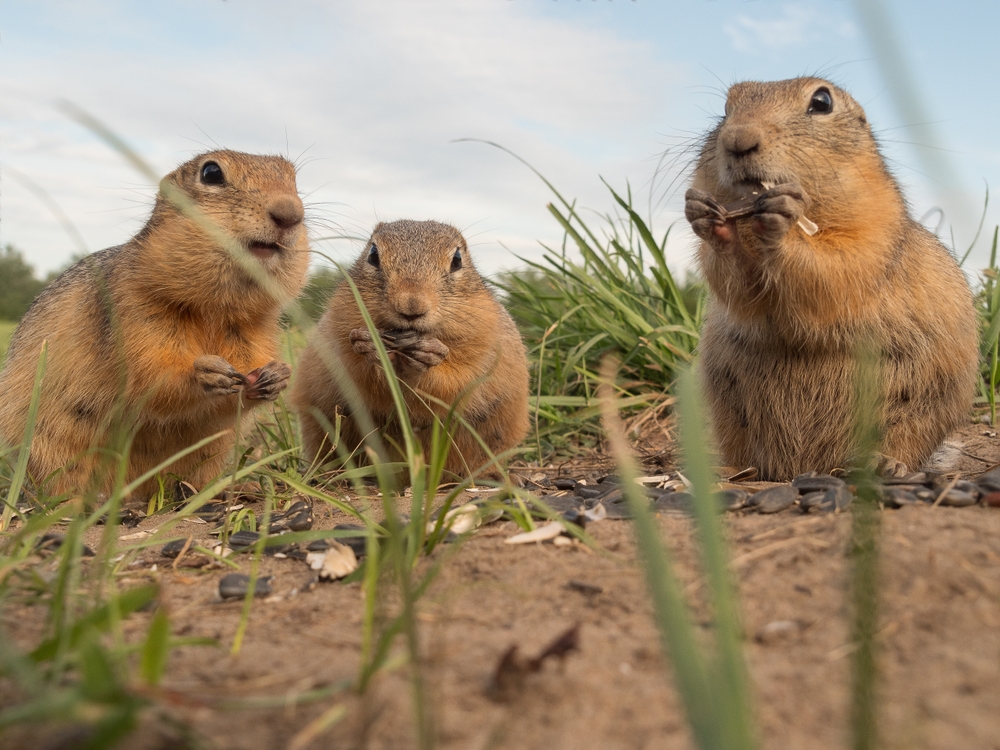
Prairie dogs are small, burrowing rodents that play a significant ecological role in the grassland ecosystems of North America. They live in complex underground colonies known as “towns,” which can span several acres and house thousands of individuals. These highly social animals communicate through a series of chirps and barks, keeping their community connected and alert to potential dangers. Observing these lively creatures is a treat, as they often pop up from their burrows to scan their surroundings.
Prairie dogs face numerous challenges, including habitat destruction and disease outbreaks. Despite these threats, they are crucial for maintaining grassland biodiversity as their burrowing activities aerate the soil and provide habitats for other species. Conservationists work to protect prairies and prairie dogs, ensuring these charismatic rodents continue to be a vital part of the ecosystem. They remind us of the intricate connections within nature and the importance of preserving even the smallest inhabitants of our natural world.
9. The Graceful Pronghorn: Speed Demons of the Plains
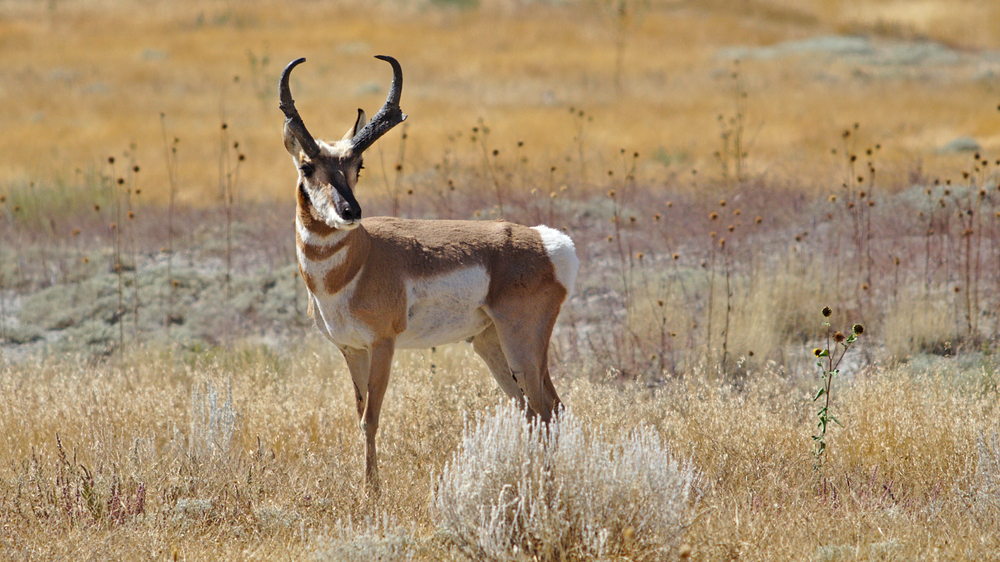
Pronghorns are unique to North America, known for their incredible speed and endurance. They are the fastest land mammals in the Western Hemisphere, capable of reaching speeds up to 60 miles per hour. Residing in open plains, grasslands, and deserts, pronghorns are well-adapted to life in the wide-open spaces of the American West. Their large eyes provide excellent vision, allowing them to spot predators from great distances.
Despite their adaptability, pronghorns face challenges from habitat fragmentation and barriers such as fences, which hinder their natural migration patterns. Conservation efforts focus on creating wildlife corridors and modifying fences to facilitate pronghorn movements. Pronghorns are a testament to the vast open spaces of America and the challenges of balancing development with wildlife conservation. They inspire us to preserve the freedom of movement for all creatures and maintain the landscapes that have defined their existence for thousands of years.
10. The Elusive Red Wolf: Guardians of the Southern Wilderness
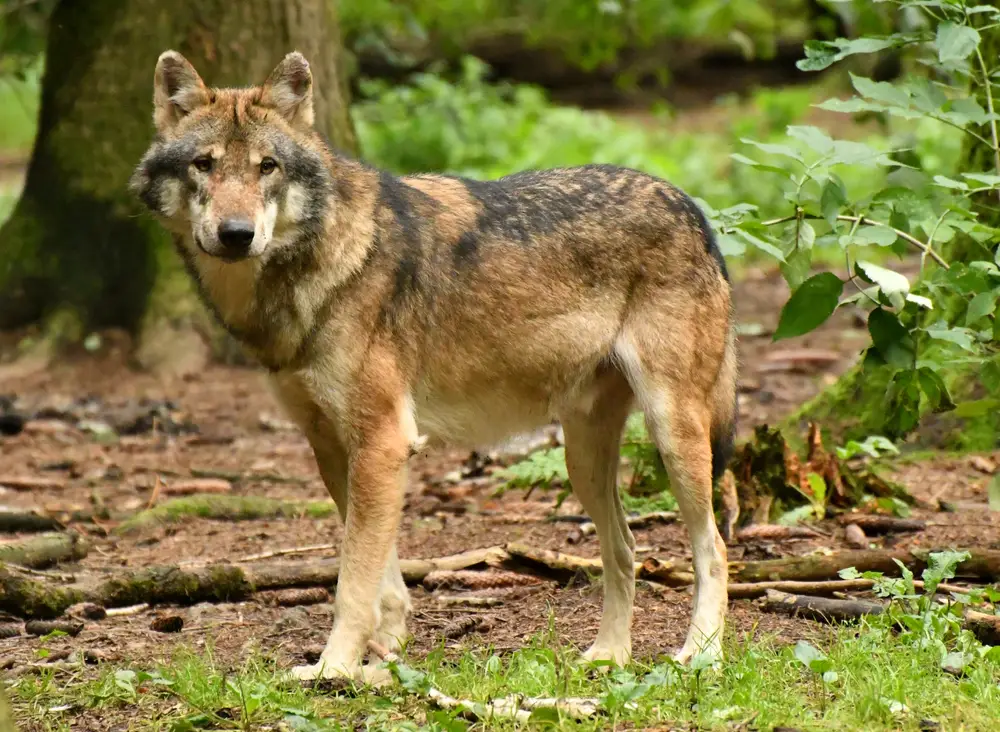
Red wolves are one of the most endangered canid species in the world, with only a few hundred remaining in the wild. Native to the southeastern United States, these wolves once roamed forests, swamps, and coastal prairies. Their striking reddish coats and keen senses make them formidable predators, though they are known to be shy and elusive. Red wolves play a vital role in maintaining the health of their ecosystems by hunting small mammals, which helps regulate prey populations.
Efforts to conserve red wolves include captive breeding programs and reintroduction initiatives to bolster wild populations. Despite these efforts, they face numerous challenges, including habitat loss and hybridization with coyotes. Protecting these wolves requires a collaborative approach, involving private landowners, local communities, and government agencies. Red wolves remind us of the fragility of natural ecosystems and the critical importance of preserving biodiversity.
11. The Enchanting Luna Moth: Nighttime Jewels of the Forest
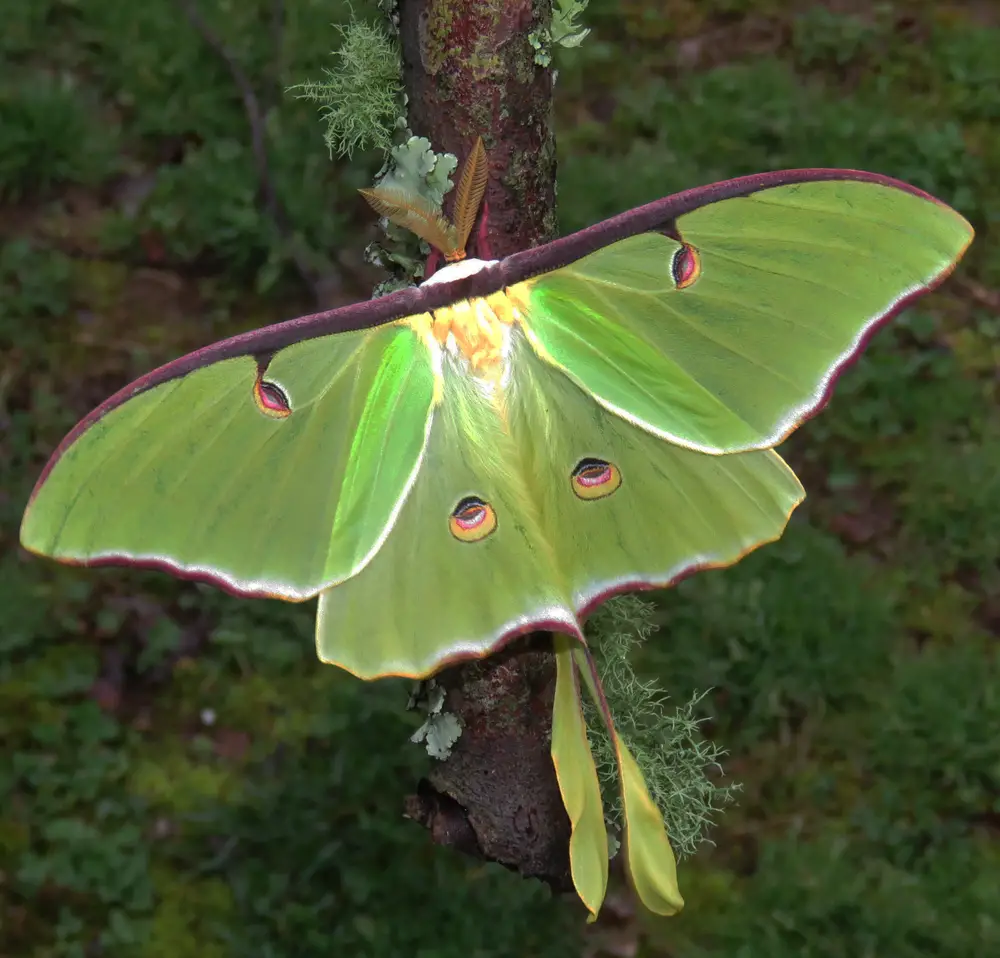
Luna moths are among the most beautiful and recognizable moth species in North America, with their pale green wings and delicate tails resembling a crescent moon. These nocturnal insects are primarily found in deciduous forests, where they emerge in late spring and summer. Luna moths have a short adult lifespan of about a week, during which they focus solely on mating and laying eggs. Observing a luna moth fluttering gracefully under the moonlight is a magical experience.
While they are not endangered, luna moths face threats from habitat loss and light pollution, which can disrupt their natural behaviors. Conservation efforts emphasize the importance of preserving native forests and promoting dark sky initiatives to protect nocturnal wildlife. Luna moths serve as a reminder of the delicate balance within ecosystems and the enchanting beauty that can be found in the quiet, overlooked corners of nature. They invite us to appreciate the wonders of the night and the creatures that inhabit it.
12. The Playful Sea Otter: Guardians of the Kelp Forests
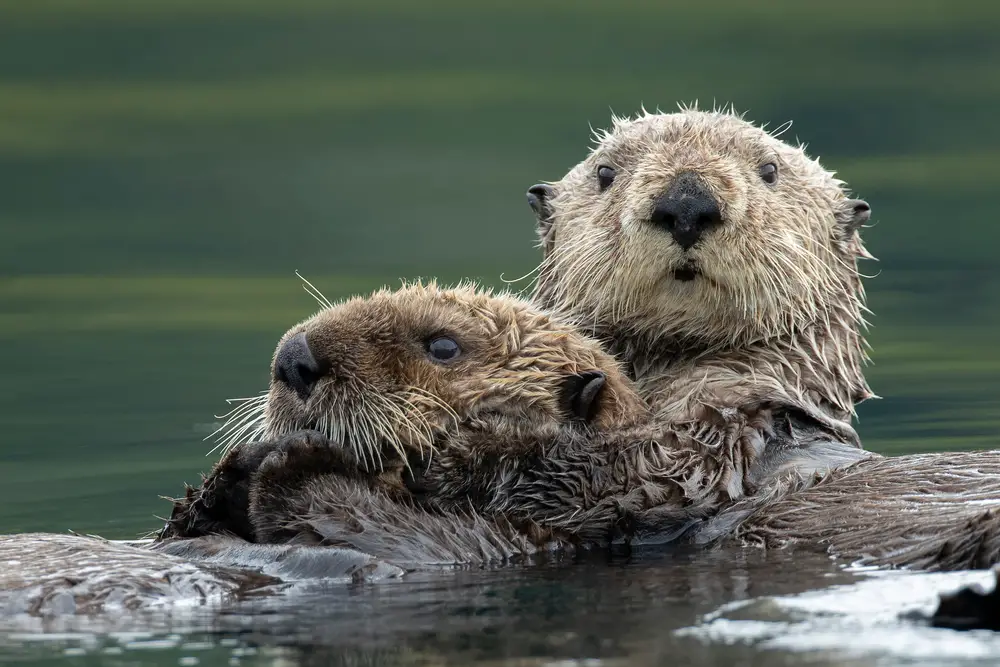
Sea otters are charismatic marine mammals known for their playful behavior and crucial role in maintaining the health of kelp forest ecosystems. Found along the Pacific coast from Alaska to California, these furry creatures use tools like rocks to crack open shellfish, showcasing their intelligence and adaptability. Sea otters have a thick fur coat that insulates them in cold waters, and their constant grooming helps maintain its insulating properties. Watching sea otters frolic in the water is a delightful experience, as they often float on their backs and use their paws to hold hands, a behavior known as “rafting.”
Sea otters were once hunted to near extinction for their fur, but conservation efforts have helped their populations rebound. However, they still face threats from oil spills, pollution, and habitat loss. Protecting sea otters involves safeguarding their coastal environments and ensuring sustainable fisheries management. These endearing creatures remind us of the importance of marine conservation and the interconnectedness of ocean ecosystems, inviting us to cherish and protect the wonders of the sea.
